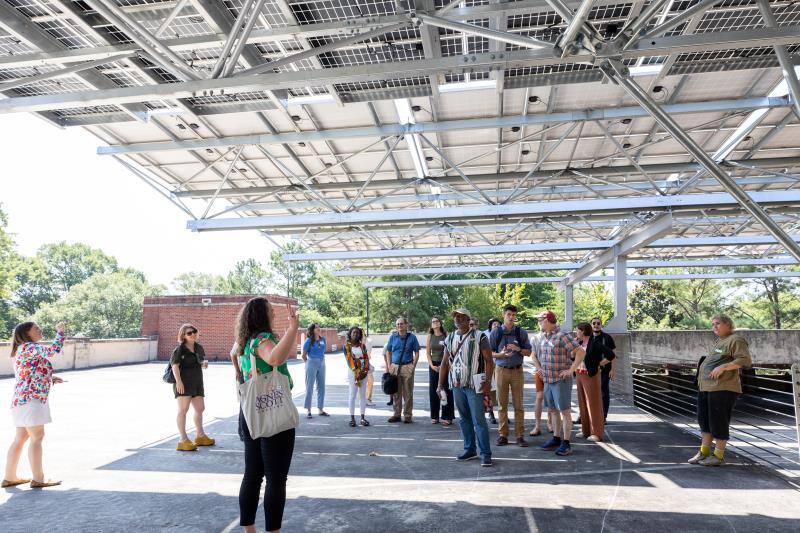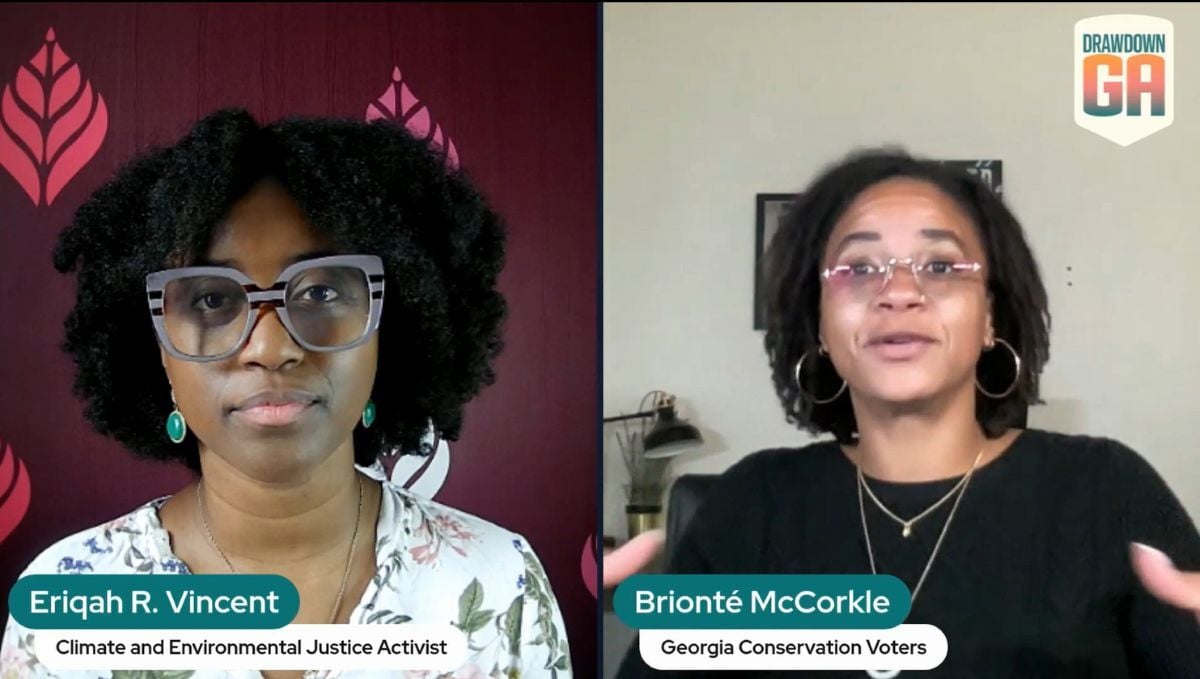What do ten years of advances in solar array technology look like?
Visit Agnes Scott College’s newest and largest solar array on its Decatur campus, and you will see exactly that: a side-by-side visual comparison of what a decade of solar advancements in Georgia looks like. And this unique perspective on solar technology wouldn’t be possible without the support of the climate community at Agnes Scott and in Decatur more broadly.
Read on to learn more about this exciting new solar development at Agnes Scott College.
The History of Energy Innovation at Agnes Scott College
Since August 9, 2024, a new 184 kW solar array has produced renewable energy to support the historic renovation of Agnes Scott’s oldest and first building, Agnes Scott ‘Main’ Hall. This 1891 High Victorian Gothic-style building was the first in DeKalb County to install electric lights. Community members would gather on the front quad in the evenings to watch the lights turn on. Now, 58% of the electricity usage in Main Hall will be powered by solar energy.

The 184 kW solar array is located on the college’s West Parking Garage adjacent to one of five solar arrays installed in 2013-2014. The original five solar array installations, totaling 238 kW, made Agnes Scott the first non-profit in Georgia to produce solar power as part of Georgia Power’s Advanced Solar Initiative (GPASI). These arrays produce enough energy to power 31 average-sized U.S. homes annually.
The side-by-side comparison of the 2014 93 kW array and the 2024 184 kW array on the West Parking Garage tells a visual story of technological and design advancements in steel racking systems and solar panels. Both solar array systems have relatively the same square footage of surface area, yet the 2024 184 kW system has increased productivity by 98%.
Benefits of New Technology in Solar Panels
The new solar array, installed by RockBridge Solar Developers and Quest Renewables via Radiance Solar, features bifacial panels that increase energy production through solar cells designed on both sides of the panel. This design also allows the panel to generate energy from the light reflected off surfaces underneath the panel. Similarly to why you might wear sunglasses to protect your eyes from the sun's glare even in the shade or on a more overcast day, bifacial panels use that glare to maximize energy production.
Advancements in Solar Racking Systems
The two racking systems have a unique and ‘Georgia-grown’ story of their own. A racking system is how you install the panels on the structure (e.g., ground mount, rooftop, or canopy). The two racking systems on the West Parking Garage are canopy installations designed by Quest Renewables, a state-of-the-art technology and engineering design firm that got their start as part of a Georgia Tech Research Institute’s (GTRI) grant-funded project awarded by the U.S. Department of Energy’s Sunshot program.
Their goal was to design and fabricate racking solutions that would allow solar to compete with other conventional energy sources by reducing projected labor costs and installation inefficiencies. The 2014 93 kW array racking system at Agnes Scott was Quest Renewables’ first installation.
A decade later, Quest Renewables partnered with the project team with a focus on material stewardship and intentionally designed the racking system with reduced steel, all while maintaining the racking system’s durability. As you stand under the two canopies, you can see the design advancements that continue to elevate this innovative architecture's beauty.
Obtaining Funding for Solar Arrays at Agnes Scott College
This project used a similar collaborative and creative financing model to the 2013-2014 solar array installations that pre-date the opportunities outlined in the Inflation Reduction Act. That process was captured and shared in the case study produced by Southface and Agnes Scott, Harnessing the Sun: A Case Study of Solar Energy Deployment at Agnes Scott College.
Southface Institute’s GoodUse Grants program was part of the financing model, which included stacking and braiding funding sources. GoodUse Grants focus on helping nonprofits reduce utility costs and reinvest those savings into their programs. For Agnes Scott, that means fulfilling our mission to educate women to think deeply, live honorably, and engage the intellectual and social challenges of their times.
Another integral collaboration of the creative financing model came from our supportive community partner, Monarch Private Capital. Providing a full-scale renewable energy investment platform, Monarch Private Capital focuses on tax equity financing for high-quality renewable energy projects.
Key Support Within the Agnes Scott Community for Solar Energy
This small, liberal arts women’s college in the South would not have been able to bring climate solutions home on its campus and in the broader community without the innovative leadership and support of:
-
Susan Kidd, the Founding Executive Director of the Agnes Scott Center for Sustainability
-
Jennifer Kaduck, Solar Project Manager & Senior Policy Advisor
Like all solutions to collectively reduce carbon emissions in the state of Georgia, this project truly took a village.
Stay Up to Date on Inspiring Climate Solutions Stories in Georgia
Don’t miss out on future stories about Georgia’s progress on climate. Subscribe to our blog to be notified when we publish new posts about research updates, uplifting climate solutions stories, and more.









